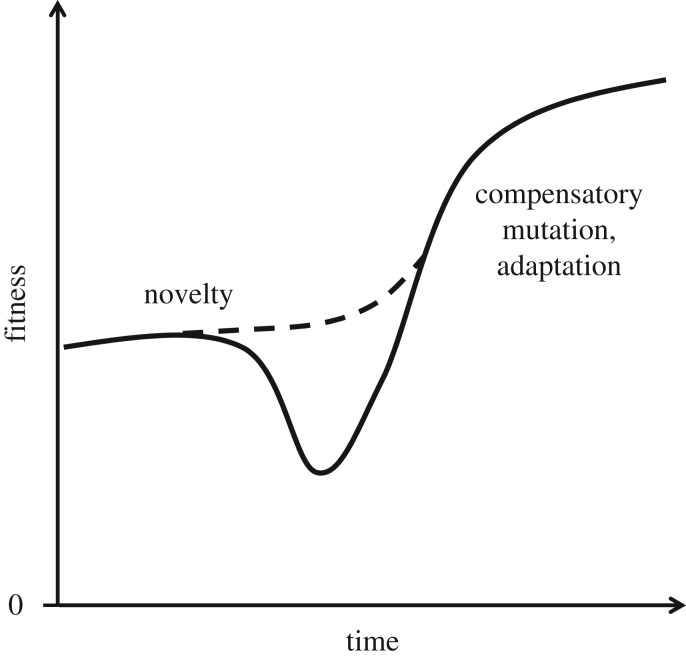Figure 4.
Simplified representation of the fitness of an innovated lineage through time. Inventions (e.g. mutations) and recombinations lead to a novelty, which may show an increase in fitness of the novel phenotype relative to the ancestral phenotype (dashed line), no change (not shown) or a net cost (solid line). The latter may occur if major rearrangements underlie the novelty, or if environmental conditions are not favourable. To potentially become an innovation, the novelty (or states leading up to it) must spread in the population, or promote population invasion into new niches, and either of these may require some combination of refinements (e.g. DNA mutations that compensate costs; ameliorations that make a technology more efficient or productive), adaptations in other phenotypic traits and conducive environmental conditions.

